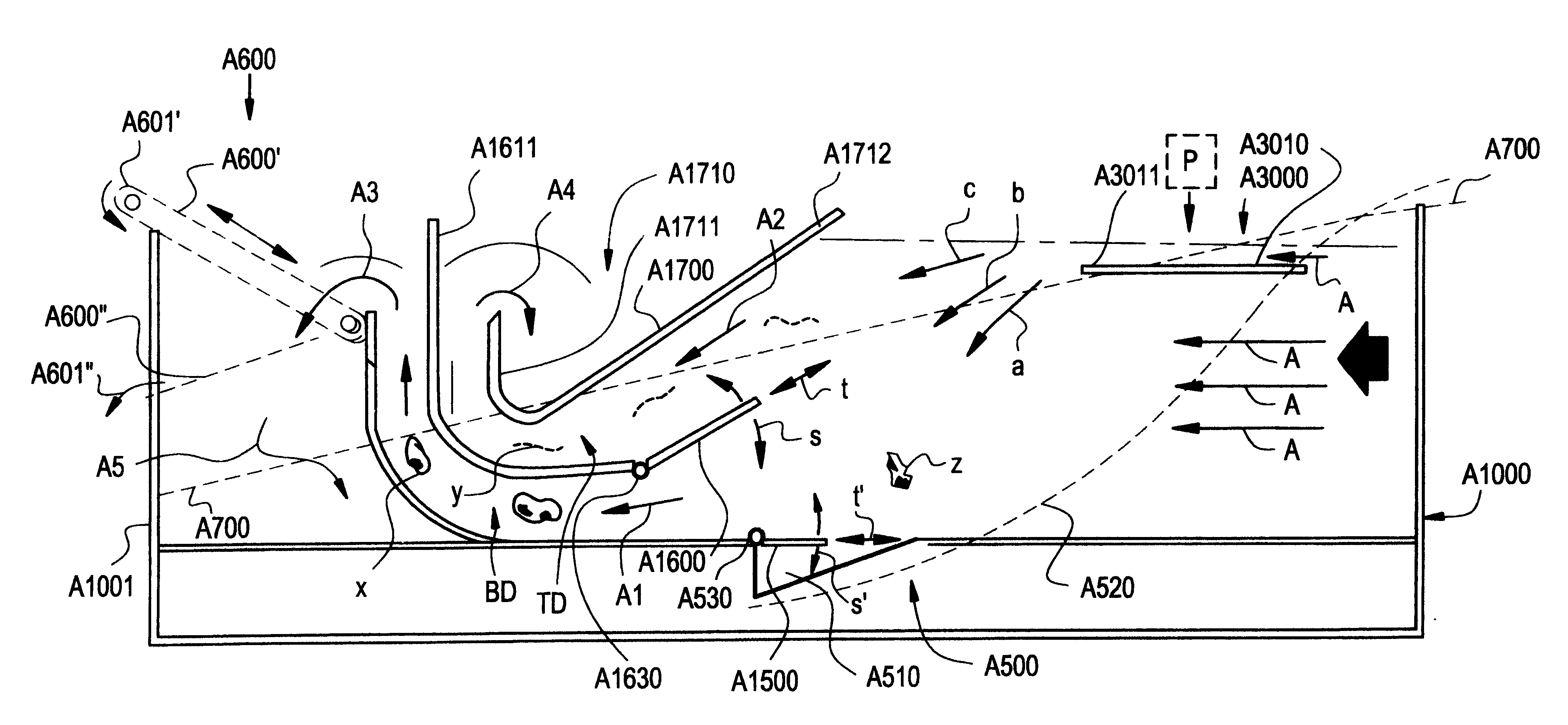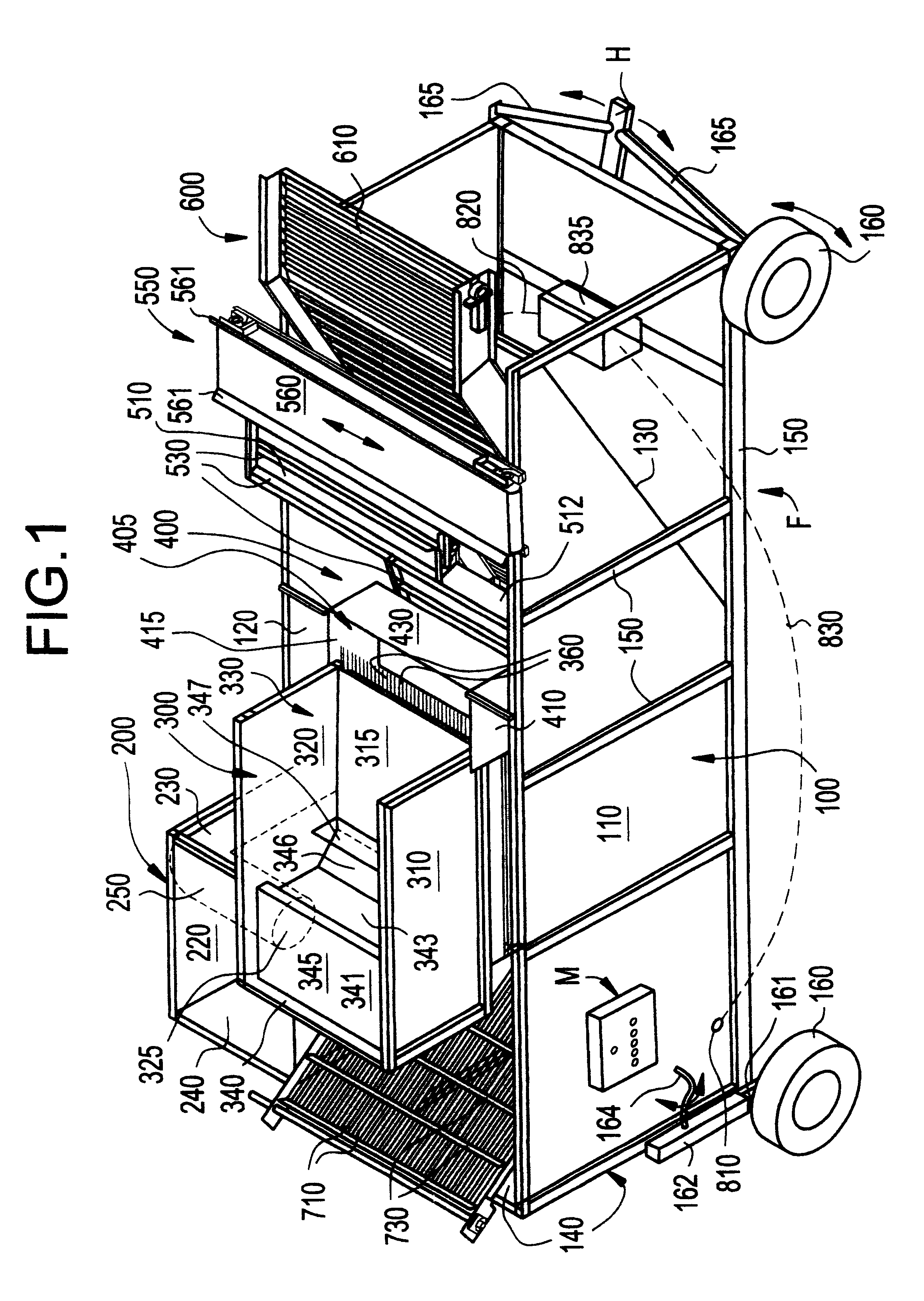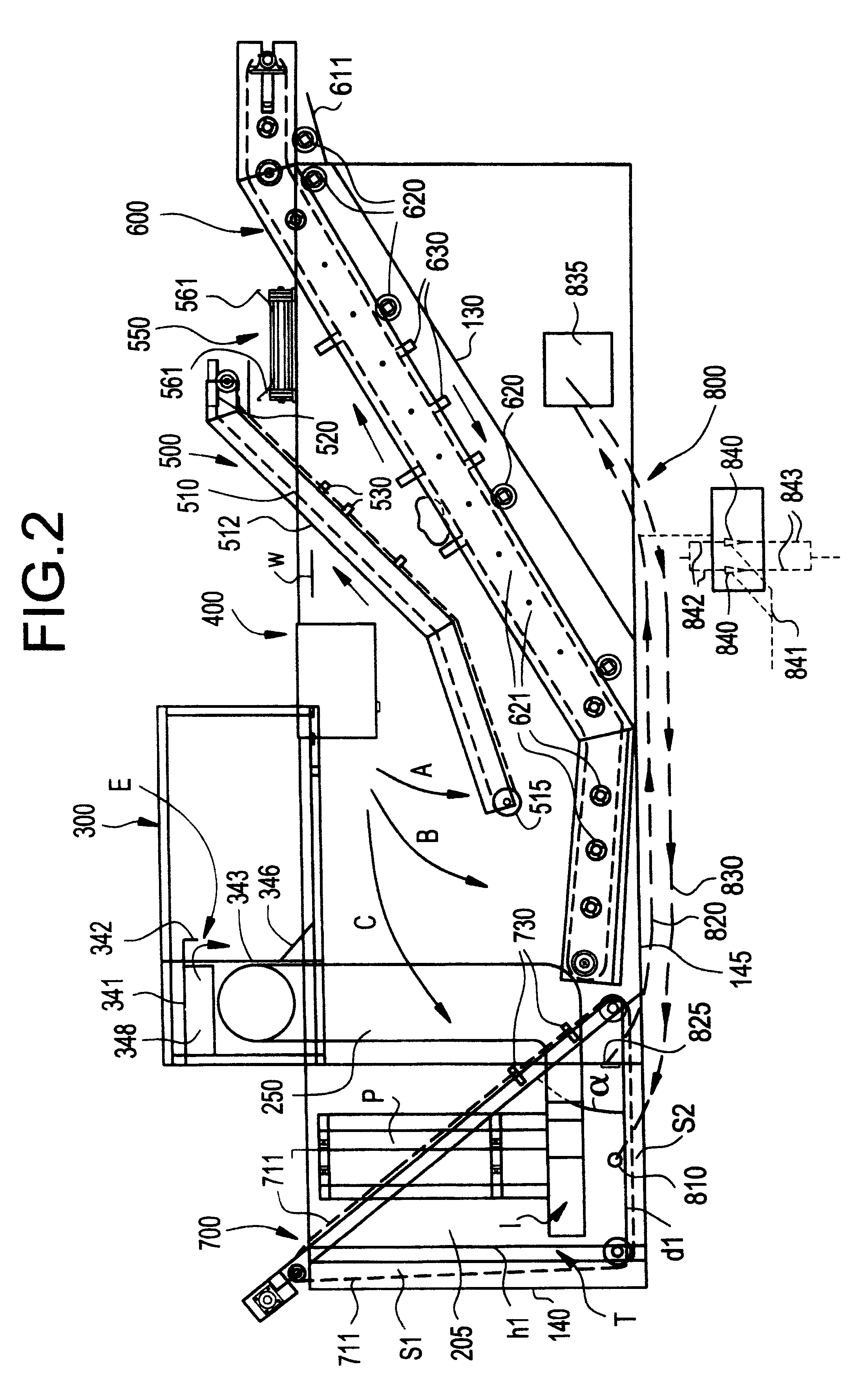System for debris elimination and item separation and method of use thereof
a technology of debris elimination and item separation, which is applied in the direction of gas current separation, solid separation, chemistry apparatus and processes, etc., can solve the problems of farmer's need, lost sale, and unavoidable collection of various debris along with potatoes
- Summary
- Abstract
- Description
- Claims
- Application Information
AI Technical Summary
Benefits of technology
Problems solved by technology
Method used
Image
Examples
Embodiment Construction
shows preferred sizes for a construction similar to the preceding example. If the cut-offs from the light debris collection and the heavy debris collection are varied from that in example A, such as if different product types are to be separated (e.g., other items or other potato types with different qualities), then the terminal velocity of the product will vary. As shown in example B, this change in terminal velocity requires a change in the distance to the top and bottom ducts, or to dividers thereto. As shown in example B, all other dimensions can remain the same. On the other hand, example C illustrates one manner of adjusting the system to process a larger quantity of potatoes or the like. In example C, when the bottom duct height is increased to 10 inches, a number of other dimensions are altered therewith, and the system potato capacity is substantially increased.
For optimal separation of potatoes, less than 1.8 to 2 lbs / minute potatoes per each gallon per minute ("GPM") wat...
PUM
 Login to View More
Login to View More Abstract
Description
Claims
Application Information
 Login to View More
Login to View More - R&D
- Intellectual Property
- Life Sciences
- Materials
- Tech Scout
- Unparalleled Data Quality
- Higher Quality Content
- 60% Fewer Hallucinations
Browse by: Latest US Patents, China's latest patents, Technical Efficacy Thesaurus, Application Domain, Technology Topic, Popular Technical Reports.
© 2025 PatSnap. All rights reserved.Legal|Privacy policy|Modern Slavery Act Transparency Statement|Sitemap|About US| Contact US: help@patsnap.com



